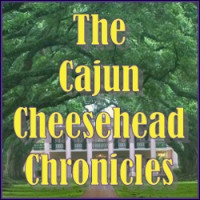 Swashbuckling and Austen?
Swashbuckling and Austen?
by Jack Caldwell
Greetings, everyone. Jack Caldwell here.
What’s more romantic than a good swashbuckler, eh? Too bad Jane Austen never wrote one.
Those of you who have read the novels of Jane Austen are familiar with her themes and style. It is a mark of her genus that her works are more popular today than they were 200 years ago. Yet, modern-day film makers find something lacking in her stories. They add bits and pieces, thinking it will appeal to today’s audiences. Sometimes they are right—the legendary pond scene in 1995’s Pride & Prejudice—and sometimes they are spectacularly wrong. I speak of the abomination known as 1999’s Mansfield Park.
The usual ingredient added to spice up the adaptations of Miss Austen’s novels is sex. It is never explicit (except the aforementioned abomination). It is more subtle, allowing the audience to understand these very real characters do feel desire. It is human.
The other ingredient added is violence. In 1995’s Pride & Prejudice, we have the fencing club scene. In 2008’s Sense and Sensibility, we witness the duel between Colonel Brandon and Mr. Willoughby. These two episodes never appeared in Miss Austen’s work. In fact, the idea of describing such scenes in a work of fiction was a new idea to the Regency reader.
 The swashbuckling novel is tied to the rise of Romanticism, usually based in historical events. Sir Walter Scott’s Waverley, published in 1814, is considered one of the first historical novels, and the first that later would be considered a swashbuckler. He would follow that up in 1819 with Ivanhoe. Later, Alexandre Dumas would perfect the genre with his works, such as The Three Musketeers (1844) and The Count of Monte Cristo (1846). Other great swashbucklers are Robert Louis Stevenson’s Treasure Island (1883) and Anthony Hope’s The Prisoner of Zenda (1894).
The swashbuckling novel is tied to the rise of Romanticism, usually based in historical events. Sir Walter Scott’s Waverley, published in 1814, is considered one of the first historical novels, and the first that later would be considered a swashbuckler. He would follow that up in 1819 with Ivanhoe. Later, Alexandre Dumas would perfect the genre with his works, such as The Three Musketeers (1844) and The Count of Monte Cristo (1846). Other great swashbucklers are Robert Louis Stevenson’s Treasure Island (1883) and Anthony Hope’s The Prisoner of Zenda (1894).
But swashbuckling really took off with Hollywood. They started with the silent movies. Once sound came, Katie, bar the door! The Adventures of Robin Hood! The Mark of Zorro! Captain Blood! The Crimson Pirate! Scaramouche! The Princess Bride (yeah, they can be funny)! And, of course, The Scarlet Pimpernel!
 Published in 1905, The Scarlet Pimpernel was written by the Baroness Emma Orczy. For a famous swashbuckling novel, there is really little swordplay in it. Swordplay does not a swashbuckler make. The book or movie must feature a daring and romantic adventure with bravado or flamboyance. Boy, does that describe Sir Percy Blakeney!
Published in 1905, The Scarlet Pimpernel was written by the Baroness Emma Orczy. For a famous swashbuckling novel, there is really little swordplay in it. Swordplay does not a swashbuckler make. The book or movie must feature a daring and romantic adventure with bravado or flamboyance. Boy, does that describe Sir Percy Blakeney!
So how does this fit in with Jane Austen? Sir Walter Scott didn’t invent the genre until 1814.
Using my author’s conceit, I decided to go where Miss Austen did not. Baroness Orczy’s Pimpernel was set during the French Revolution, so it was not too great a stretch to have him still around in 1815. He’s be in his fifties with children. Still clever and outrageous, but a bit slowed down due to age. He’d still have enemies in France, but he would need help. Who’d be available in my Jane Austen’s Fighting Men Universe during the Hundred Days Crisis? Not Brandon, not Fitzwilliam, not Buford, not Wentworth.
The answer: Captain Frederick Tilney from Northanger Abbey.
So that’s how things got started. To see how I slipped swashbuckling into Miss Austen’s works, you’d have to read THE LAST ADVENTURE OF THE SCARLET PIMPERNEL. Or you could listen to it, because the audiobook, performed by Jan Ashe, is available at Audible, Amazon, and iBooks!
Until next time, this has been the Cajun Cheesehead Chronicles.
It takes a real man to write historical romance, so let me tell you a story…


4 comments
Skip to comment form
Swashbuckling!!! One of my favorite genres with two authors which are not very known: Emilio Salgari (Sandokan) and Rafael Sabatini (Captain Blood).
Also some movies from the 30’s and 40’s with the great Errol Flynn.
I loved The Last Adventure of the Scarlet Pimpernel! I also read and enjoyed the original novel as well as the movie.
I’m such a sucker for Sir Percy Blakeney. The Last Adventure of the Scarlet Pimpernel is a favorite of mine.
Oh, darn. I just ended up adding to my ToBeRead pile.